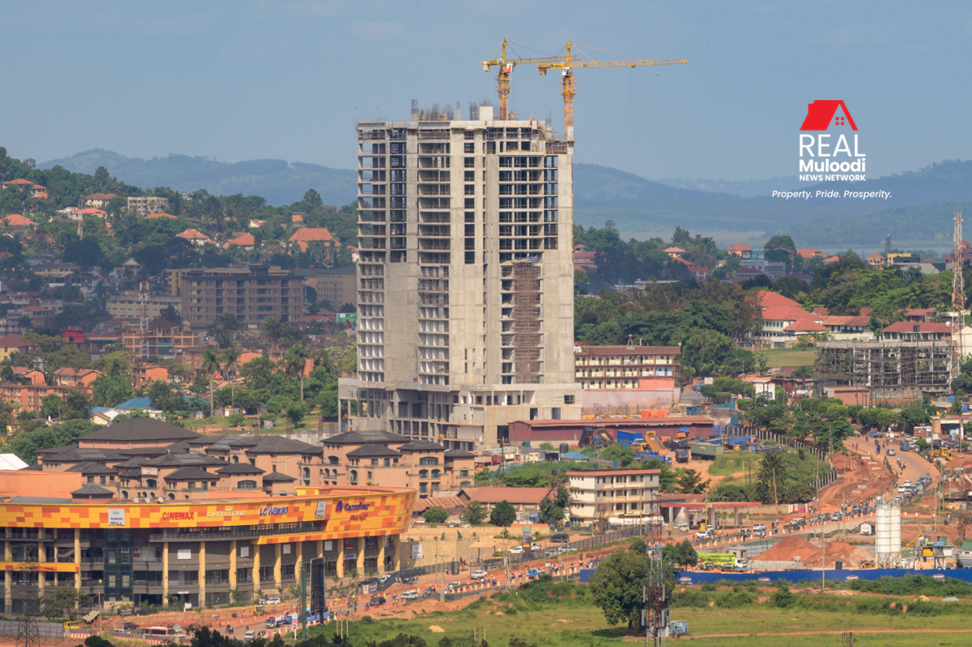UGANDA, Kampala | Real Muloodi News | Climate change is significantly affecting the buildings in Uganda. As global warming accelerates, the environmental conditions in which buildings operate are changing, presenting new challenges for real estate in the region.
The key phrase “buildings and global warming” underscores the crucial connection between these two elements.
Design Parameters and Environmental Changes
Architects and engineers design buildings to withstand local climate conditions, such as temperature ranges, rainfall, wind, and geological factors.
These structures are built using materials and design standards suited to these parameters. However, when climate parameters are exceeded, buildings may experience failures. For example, high winds can rip off roof tiles, and prolonged heavy rain can cause basement flooding.
As climate change progresses, these parameters are increasingly exceeded, causing more frequent and severe building damage.
Higher average temperatures and humidity levels are becoming permanent, and events once considered rare, such as century-level floods, are now more common.
Localised Impacts and Simple Remedies
In some cases, climate impacts on buildings in Uganda can be localised and managed with simple remedies. For example, overheating in houses can be mitigated by shading windows, improving insulation, and ensuring adequate ventilation.
However, other effects are more insidious and gradually undermine a building’s core functions.
Structural Deterioration
Intense wind and rain will accelerate the deterioration of external cladding and increase the frequency of leaks. Higher temperatures will expand the regions where insects like timber-eating termites can live, posing significant structural risks. Metals expand with heat, which can cause structural components to buckle.
Subsidence and Material Failures
Subsidence, where the ground beneath a building gives way, causing it to crack or collapse, is expected to become more common in Uganda.
Buildings on clay soils are particularly vulnerable as these soils swell with water and shrink when dry. Changes in rainfall patterns exacerbate this issue.
Extreme weather events will subject building exteriors to more intense climate loads for longer durations, increasing the risk of premature degradation of building elements like roofs, walls, and fenestration systems. This also raises the risk of moisture-related problems.
Concrete Degradation
Reinforced concrete, widely used in construction, is at risk from climate change in Uganda. In a warmer, wet climate, the steel inside the concrete can rust and expand, cracking the concrete in a process known as “concrete cancer.”
Coastal buildings are especially vulnerable due to saltwater accelerating rusting and rising sea levels affecting foundations.
Concrete is also affected by carbonation, where carbon dioxide in the air reacts with cement, lowering its pH and making the steel more prone to corrosion.
Rising Carbon Dioxide Levels
Since the 1950s, atmospheric carbon dioxide levels have increased from around 300 parts per million to over 400 parts per million. This rise is primarily due to the burning of fossil fuels.
Annual emissions have increased every decade, from nearly 11 billion tonnes of carbon dioxide per year in the 1960s to an estimated 36.6 billion tons in 2023, according to the Global Carbon Budget 2023.
Natural processes, or “sinks,” that remove carbon from the atmosphere, such as those on land and in the ocean, absorbed about half of the carbon dioxide emitted annually from 2011 to 2020.
However, the total amount of carbon dioxide in the atmosphere continues to rise because emissions exceed the capacity of these natural sinks.
Indiscriminate Impact of Climate Change
The impact of climate change on buildings in Uganda is indiscriminate. Whether in urban areas like Kampala or rural regions, buildings are vulnerable to climate impacts.
Technologies to mitigate these effects, such as improved building materials and designs, are crucial but must be widely adopted.
Adaptation Strategies
Adapting buildings to changing climate parameters is essential in Uganda. This includes retrofitting existing buildings and constructing new ones to withstand climate change.
One approach is biomimicry, which involves designing buildings inspired by nature. This method integrates ecological functionality, such as using vegetation for natural flood defences and incorporating habitat features into urban designs.
Policy and Community Involvement
To successfully implement biomimicry and other adaptive strategies in Uganda, local ecologists must be involved to understand the unique complexities of habitats.
The inherent value of all creatures should be reflected in urban design, and these approaches should be embedded in policy to ensure long-term sustainability.
As global warming accelerates, buildings in Uganda must adapt to new environmental conditions. By understanding the challenges and implementing adaptive strategies, Uganda can ensure that its built environment remains resilient in the face of climate change.
READ MORE LIKE THIS:
Hamis Kiggundu Donates 100,000 Trees to Boost Kampala Greening Campaign
Knight Frank Survey Shows African Home Buyers Prefer Greener and Rural Homes
Kadaga, Sudhir Join NWSC Tree Planting Campaign to Green Kampala City



